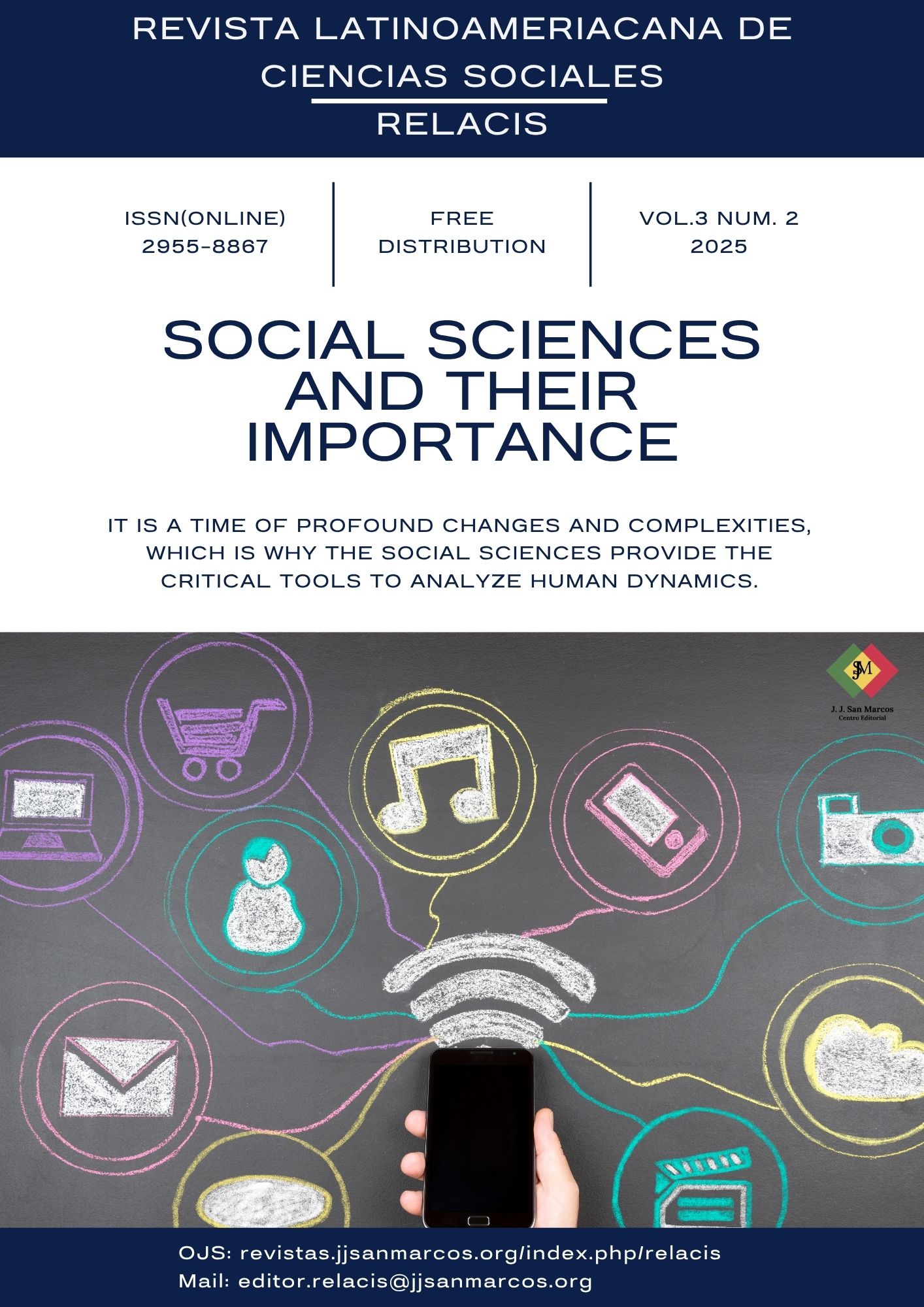Influence of Perceived Image on the Future Behavior of Acapulco Residents: Toward a Public Policy Strategy
DOI:
https://doi.org/10.5281/zenodo.16347002Keywords:
Tourism, image, public policiesAbstract
Tourism loyalty is defined as the commitment of visitors to a destination, and a positive image can increase the likelihood of favorable behaviors, such as revisiting a place and promoting it through word of mouth. The methodology employed is quantitative and cross-sectional, using a structured questionnaire based on relevant literature. Data were collected through snowball sampling, focusing on Acapulco residents. A statistical analysis was performed with SPSS, applying a linear regression model to evaluate the relationship between cognitive and affective dimensions of perceived image and future behavior of the inhabitants, the results show a strong correlation between perceived image and future behavior, highlighting that affective perceptions have a greater weight than cognitive ones. The improvement in the affective perception of the destination can significantly increase the loyalty of the inhabitants, promoting favorable behaviors such as recommending the destination and defending it against criticism, in addition to proposing that public policies should focus on strengthening the positive image of Acapulco to promote its long-term tourism sustainability.
Downloads
References
Alcañiz, E.B., García, I.S., & Blas, S.S. (2005). Relationships among residents' image, evaluation of the stay and post-purchase behavior. Journal of Vacation Marketing, 11(4), 291–302. https://doi.org/10.1177/1356766705056626
Almendarez-Hernández, M. A., Ibáñez-Pérez, R. M., & Olmos-Martínez, E. (2021). Atributos que influyen en la elección del visitante en cuatro pueblos mágicos del noroeste mexicano. CienciaUAT. 16(1); 73-85. https://doi.org/10.29059/cienciauat.v16i1.1542
Beerli, A., & Martín, J. D. (2004). Tourists' characteristics and the perceived image of tourist destinations: A quantitative analysis–A case study of Lanzarote, Spain. Tourism Management, 25(5); 623-636. https://doi.org/10.1016/j.tourman.2003.06.004
Biernacki, P., & Waldorf, D. (1981). Snowball sampling: Problems and techniques of chain referral sampling. Sociological Methods & Research, 10(2), 141-163. https://doi.org/10.1177/004912418101000205
Bryman, A., & Cramer, D. (2011). Quantitative data analysis with IBM SPSS 17, 18 and 19: A guide for social scientists. Routledge.
Chen, C. F., & Tsai, D. C. (2007). How destination image and evaluative factors affect behavioral intentions? Tourism Management, 28(4); 1115-1122. https://doi.org/10.1016/j.tourman.2006.07.007
Chen, J. S., & Gursoy, D. (2001). An investigation of tourists' destination loyalty and preferences. International Journal of Contemporary Hospitality Management, 13(2); 79-85. https://doi.org/10.1108/09596110110381870
Cohen, J. (1988). Statistical power analysis for the behavioral sciences (2nd ed.). Lawrence Erlbaum Associates.
Crompton, J. L. (1979). An assessment of the image of Mexico as a vacation destination and the influence of geographical location upon that image. Journal of Travel Research, 17(4); 18-23. https://doi.org/10.1177/004728757901700404
Field, A. (2009). Discovering statistics using SPSS (3rd ed.). SAGE Publications.
Fisher, R. A. (1925). Statistical methods for research workers. Oliver and Boyd.
Gallarza, M. G., Gil, I., & Calderón, H. (2002). Destination image: Towards a conceptual framework. Annals of Tourism Research, 29(1), 56-78. https://www.researchgate.net/publication/256986919_Destination_Image_Towards_a_Conceptual_Framework
Goodman, L. A. (1961). Snowball sampling. Annals of Mathematical Statistics, 32(1), 148-170. https://doi.org/10.1214/aoms/1177705148
Hair, J. F., Black, W. C., Babin, B. J., Anderson, R. E., & Tatham, R. L. (2010). Multivariate data analysis (7th ed.). Pearson.
Ibáñez-Pérez, R. M., Olmos-Martínez, E., & Almendarez-Hernández, M. A. (2022). Factores que influyen en la disposición para recomendar pueblos mágicos del noroeste mexicano. Acta Universitaria, 23, 1-19. https://doi.org/10.15174/au.2022.3592
Kerlinger, F. N., & Lee, H. B. (2000). Foundations of behavioral research (4th ed.). Harcourt College Publishers.
Murias Fernández, M.P. y Rodríguez González, D. (2014) De nuevo en Santiago de Compostela: las implicaciones de la lealtad para un destino turístico. Revista Galega de Economía. 23(2); 47-67. https://www.redalyc.org/pdf/391/39138754003.pdf
Nunnally, J. C., & Bernstein, I. H. (1994). Psychometric theory (3rd ed.). McGraw-Hill.
Olmos-Martínez, E., Almendarez-Hernández, M. A., y Ibáñez-Pérez, R. M. (2021). Satisfacción del visitante a partir de los atributos de pueblos mágicos del noroeste mexicano. Nova Sciencia. 13(2); 1-39. https://doi.org/10.21640/ns.v13i26.2724
Oppermann, M. (2000). Tourism destination loyalty. Journal of Travel Research, 39(1), 78-84. https://doi.org/10.1177/004728750003900110
Oliveira, G. (2007). Modelos teóricos aplicados al turismo. Estudios y perspectivas en turismo, 16(1), 96-108. https://www.redalyc.org/pdf/1807/180713890005.pdf
Pearce, D. (2003). Frameworks for tourism research. CABI.
Petrocchi, M. (2001). Gestão de pólos turísticos. Futura.
Santarriaga, M., y Soto, F. C. (2021). Relación de los atmosféricos, paisaje de servicio y atractivo del lugar con las intenciones de revisita y recomendación boca a boca de un destino turístico. Cultur - Revista de Cultura e Turismo. 14(02); 1-29. https://doi.org/10.36113/cultur.v14i02.2345
Tabachnick, B. G., & Fidell, L. S. (2007). Using multivariate statistics (5th ed.). Allyn & Bacon.
Vázquez, R. (2000). Estrategia de marketing de relaciones para el desarrollo de la oferta y distribución de productos turísticos. Turismo, Comercialización de Productos, Gestión de Organizaciones, Aeropuertos y Protección de la Naturaleza. Editorial Tirant to Blanch, 19-65. Valencia.
Weisberg, S. (2005). Applied linear regression (3rd ed.). John Wiley & Sons.
Yoon, Y., & Uysal, M. (2005). An examination of the effects of motivation and satisfaction on destination loyalty: A structural model. Tourism Management, 26(1); https://doi.org/10.2307/1251929 45-56. https://doi.org/10.1016/j.tourman.2003.08.016
Zeithaml, V. A., Berry, L. L., & Parasuraman, A. (1996). The behavioral consequences of service quality. Journal of Marketing, 60(2); 31-46.
Downloads
Published
Issue
Section
License
Copyright (c) 2025 Latin American Journal of Social Sciences - Relacis

This work is licensed under a Creative Commons Attribution-NonCommercial-NoDerivatives 4.0 International License.
This journal provides immediate open access to its content, based on the principle that providing the public with free access to research supports a greater global exchange of knowledge. In addition to this, all the contents of the RELACIS magazine are under the Creative Commons License.
























